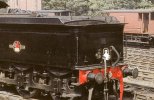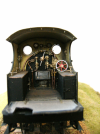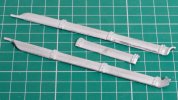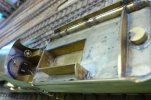Richard Gawler
Western Thunderer
Super images Richard! But please beware of them, as the engine is not what it seems.
. . .
To anyone searching for reference, please be aware that this particular locomotive is such a glorious mish-mash that any attempt to untangle fact from fiction will inevitably lead to confusion and error!
Can you tell I am a bit passionate about it?!
Pete.

Pete I am unashamedly quoting you here because you might just know . . . thinking about the locomotives and tenders built new in 1889 or 1890 (batches R23, T23, Y23, U25 and Y25), would the tenders have carried the safety chains during the 1890s?
I am doubtful, but then again I have simply looked at a few dozen photos of different locos and failed to spot any safety chains. They were too lowly for Lyn D Brooks to include in their near-exhaustive accounts of the locos published in the GERS Jounal in 1983.
I want to solder my model buffer beam onto the floor of my model tender, and I don't know whether to drill the holes for the chains.
I have resolved most of the details I want to include in my model but these chains are a bit of an unknown.
Last edited:







